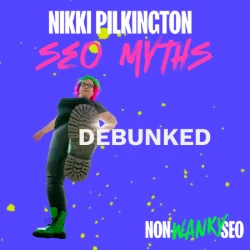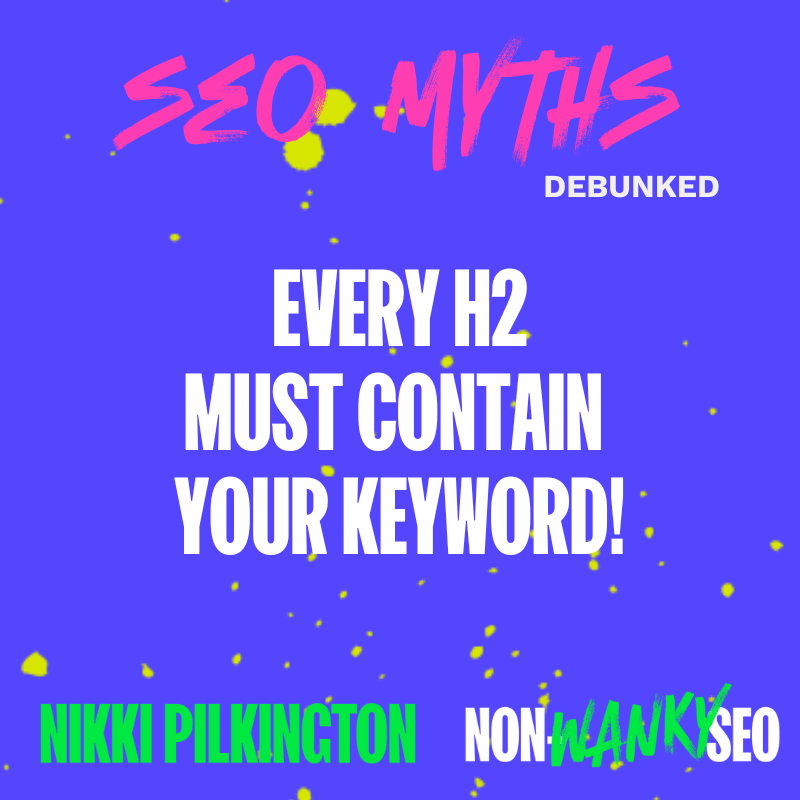The myth about mandatory keywords in every subheading is creating shitloads of content that reads about as naturally as a shopping list. Small business owners are being fed this nonsense by SEO tools that treat H2s like some kind of keyword hostage situation.

The keyword stuffing epidemic in subheadings
Walk into any SEO Facebook group and you’ll find someone asking why their perfectly readable article got a red warning from their favourite SEO tool. The crime? Not enough keywords crammed into their subheadings.
These tools are creating content that makes zero sense to actual humans. No-one needs a boatload of H2s that read like they’ve been mangled by a keyword blender: “Best accounting software & accounting solutions for small business accounting needs.” That’s not helping anyone find anything – it’s just confusing.

What H2 subheadings are for
Your H2s have one job: to guide readers through your content. They should tell people what each section contains, not showcase your ability to shoehorn a keyword into a place it doesn’t belong.
Good subheadings create a logical structure. They break up your content into digestible chunks. They help people scan your article to find what they need.

Google understands context
Search engines in 2025 are sophisticated enough to understand what your content covers without you treating every heading like a keyword exercise. Google can read your entire article, understand the topic, and figure out whether it’s relevant to searchers.
If you write about accounting software throughout your article, Google knows that’s what your content covers. You don’t need to remind it in every single subheading.
Let’s not forget, Google measures how people interact with your content too. If your keyword-stuffed headings confuse readers and make them bounce off your site, that’s a ranking signal too. And it’s not a good one.

Real examples of natural subheadings
Let’s say you’re writing about email marketing for restaurants. Which sounds more helpful?
Forced version:
- Email marketing for restaurants email campaigns
- Restaurant email marketing strategies for restaurant owners
- Restaurant marketing emails that work for restaurants
Natural version:
- Getting started with email campaigns
- Building your subscriber list
- Writing emails that get results
The second set actually helps readers navigate your content. The first set makes people wonder if you’ve had some kind of keyword-related breakdown.
Your H2s should flow naturally from your topic. If you’re explaining how to do something, your subheadings should follow the logical steps. If you’re comparing options, each H2 should cover a different aspect of the comparison.
Start with what makes sense for your readers, then see if any keywords fit naturally. If they do, brilliant. If they don’t, leave them out. Your content will be more readable and more useful.

SEO tools are a guide, not a bible
Tools that give you red warnings about keyword density in headings are measuring the wrong things. They can count keywords, but they can’t measure whether your content actually helps people or makes logical sense.
Remember this: Don’t rely on SEO plugins for perfect SEO.
Real SEO success comes from creating content that serves your audience. Tools that encourage you to make your content less readable for the sake of keyword metrics are leading you down the wrong path.
Search engines reward content that genuinely helps users. Creating clear, logical structure that makes your content easy to read and navigate? That’s proper SEO. Cramming keywords into every H2 regardless of whether it makes sense? That’s just keyword stuffing with extra steps.





